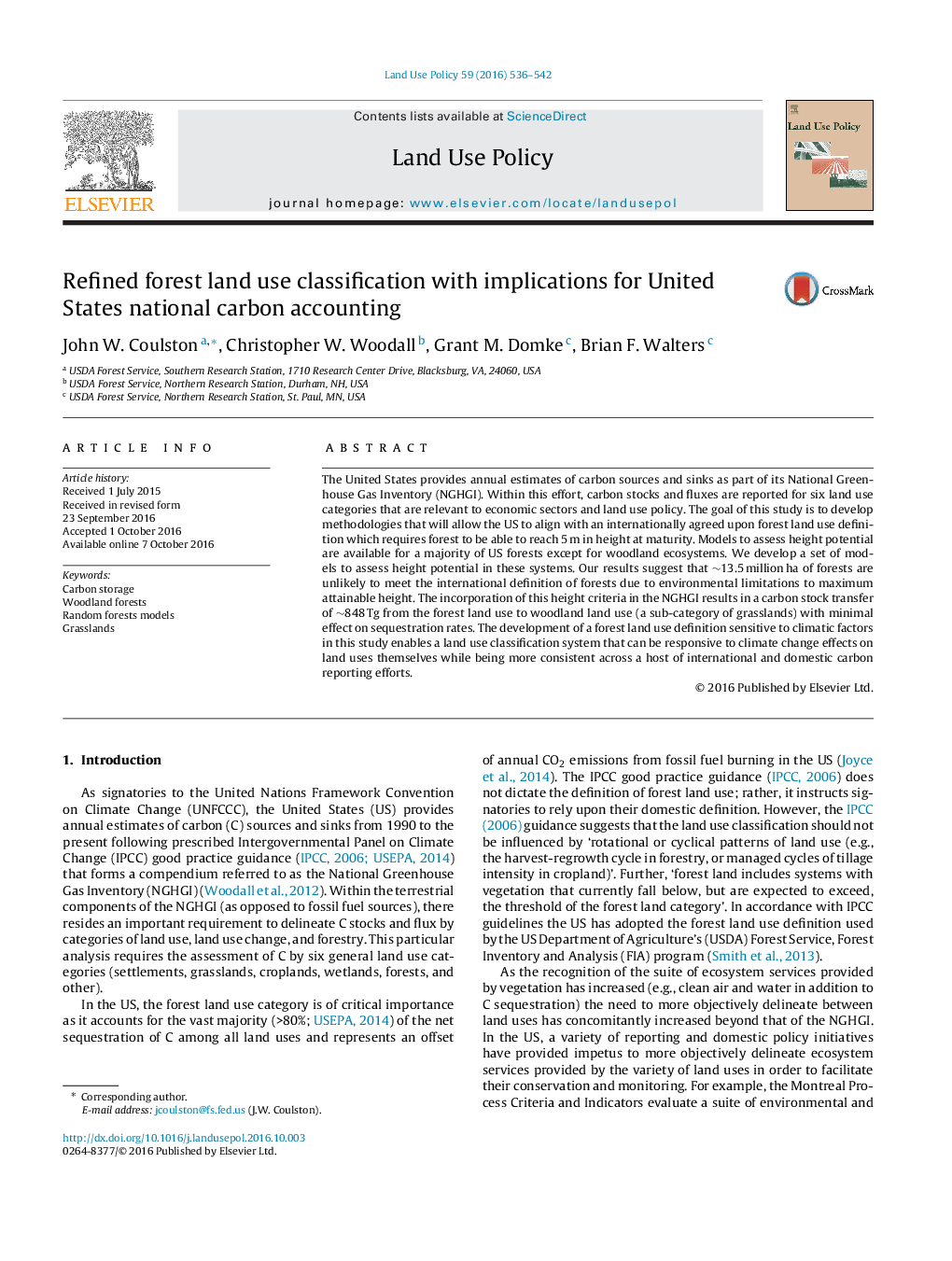| Article ID | Journal | Published Year | Pages | File Type |
|---|---|---|---|---|
| 6461603 | Land Use Policy | 2016 | 7 Pages |
Abstract
The United States provides annual estimates of carbon sources and sinks as part of its National Greenhouse Gas Inventory (NGHGI). Within this effort, carbon stocks and fluxes are reported for six land use categories that are relevant to economic sectors and land use policy. The goal of this study is to develop methodologies that will allow the US to align with an internationally agreed upon forest land use definition which requires forest to be able to reach 5 m in height at maturity. Models to assess height potential are available for a majority of US forests except for woodland ecosystems. We develop a set of models to assess height potential in these systems. Our results suggest that â¼13.5 million ha of forests are unlikely to meet the international definition of forests due to environmental limitations to maximum attainable height. The incorporation of this height criteria in the NGHGI results in a carbon stock transfer of â¼848 Tg from the forest land use to woodland land use (a sub-category of grasslands) with minimal effect on sequestration rates. The development of a forest land use definition sensitive to climatic factors in this study enables a land use classification system that can be responsive to climate change effects on land uses themselves while being more consistent across a host of international and domestic carbon reporting efforts.
Keywords
Related Topics
Life Sciences
Agricultural and Biological Sciences
Forestry
Authors
John W. Coulston, Christopher W. Woodall, Grant M. Domke, Brian F. Walters,
